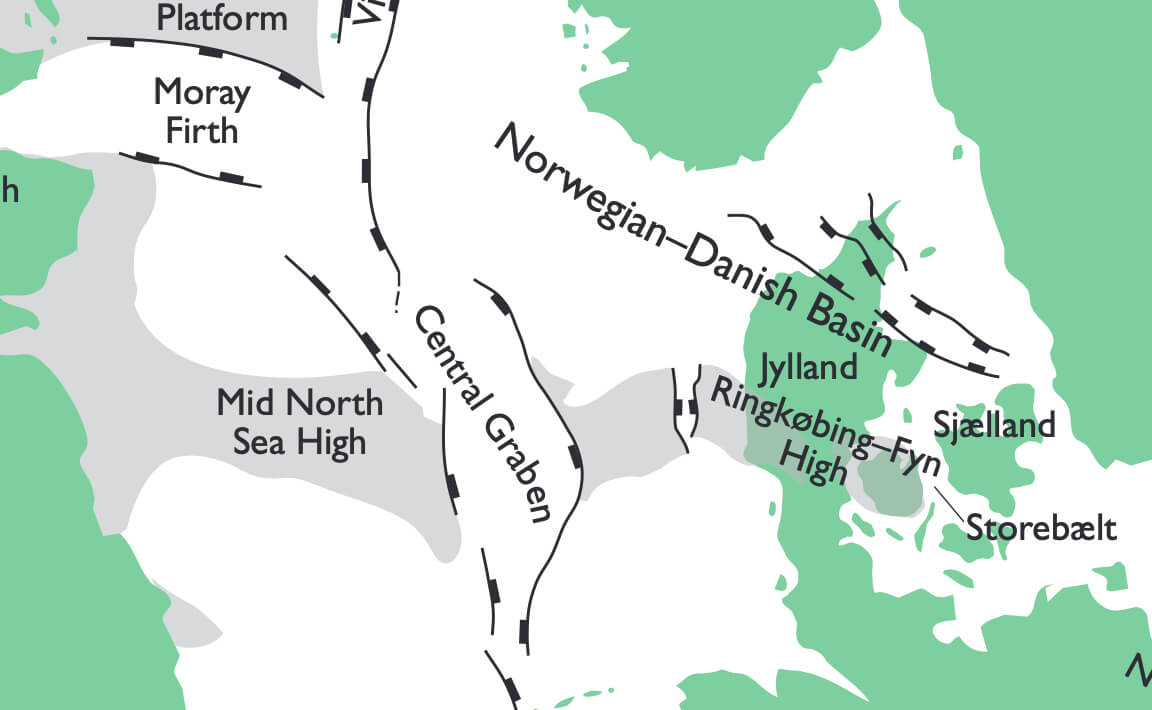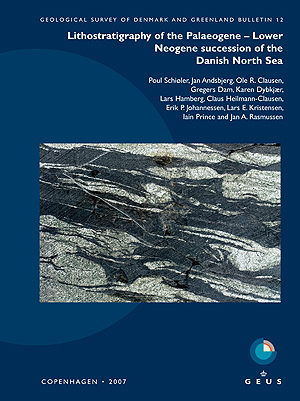
How to Cite
Share
Abstract
As a result of a lithological, sedimentological and biostratigraphic study of well sections from the Danish sector of the North Sea, including some recently drilled exploration wells on the Ringkøbing–Fyn High, the lithostratigraphic framework for the siliciclastic Palaeogene to Lower Neogene sediments of the Danish sector of the North Sea is revised. The sediment package from the top of the Chalk Group to the base of the Nordland Group is subdivided into seven formations containing eleven new members. The existing Våle, Lista, Sele, Fur, Balder, Horda and Lark Formations of previously published lithostratigraphic schemes are adequate for a subdivision of the Danish sector at formation level. Bor is a new sandstone member of the Våle Formation. The Lista Formation is subdivided into three new mudstone members: Vile, Ve and Bue, and three new sandstone members: Tyr, Idun and Rind. Kolga is a new sandstone member of the Sele Formation. Hefring is a new sandstone member of the Horda Formation. Freja and Dufa are two new sandstone members of the Lark Formation. Danish reference sections are established for the formations, and the descriptions of their lithology, biostratigraphy, age and palaeoenvironmental setting are updated.
How to Cite
Share
Copyright (c) 2007 Poul Schiøler, Jan Andsbjerg, Ole R Clausen, Gregers Dam, Karen Dybkjær, Lars Hamberg, Claus Heilmann-Clausen, Erik P Johannessen, Lars E Kristensen, Iain Prince, Jan A Rasmussen

This work is licensed under a Creative Commons Attribution 4.0 International License.
Downloads
Poul Schiøler, Jan Andsbjerg, Ole R. Clausen, Gregers Dam, Karen Dybkjær, Lars Hamberg, Claus Heilmann-Clausen, Erik P. Johannessen, Lars E. Kristensen, Iain Prince and Jan A. Rasmussen
In the mid-1990s, hydrocarbon exploration in the Danish sector of the North Sea shifted from Mesozoic targets to the lower Cenozoic, particularly in the [...]









